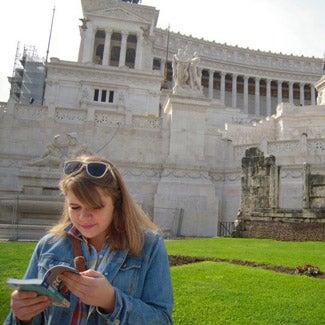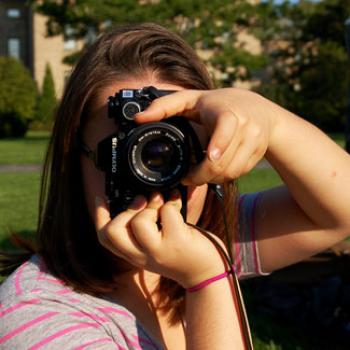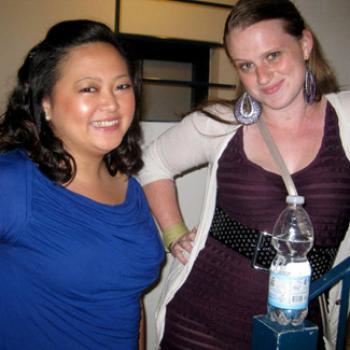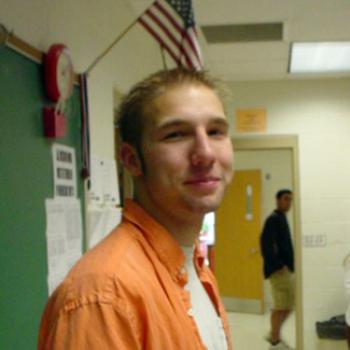On academic passions
Claire Jenson ’12
“I’m fortunate to go to Oberlin, to live in this world of thrilling academic inquiry and discovery, because the community keeps my mind constantly ticking, asking, and considering.”

The paucity of medieval sources makes studying the history of the Middle Ages terribly exciting and, in essence, interdisciplinary detective work. To arrive at the truest possible understanding of a point in the Middle Ages (a period which spans roughly 1,000 years from 500-1500 CE), we must consider numerous aspects of peoples’ lives at that moment; the political structure in which they operated, and against which they rebelled; the economic foundations of their society; the religious doctrines and practices that governed their worldview and daily activities, and finally, the arts they created, judged, and surrounded themselves with, which altogether composed their rich visual culture.
Oops, let me backtrack. At Oberlin, I am an art history major, with a specialization in — you guessed it — medieval art, especially religious art, a passion that I discovered here on campus. I was challenged early in my first semester in Professor Corey Barnes’ class Early Medieval Christian Thought, where we studied the subtle shifts in Christian theology before 1100 CE. In this class, I realized not only how incredibly complicated medieval debates about Christian beliefs were, but also the broad effects these ideas had on western European society at the time. My first winter term was spent completing the Practicum in Museum Education with the Allen Memorial Art Museum’s curator for museum education Jason Trimmer, which culminated in my first art history paper, about Neri di Bicci’s Altar Piece with Five Saints.
I was hooked — I loved reading into medieval art as a window into the lives of the people that created it: their questions, debates, tastes, delights, fears, and marvels. A course on Late Medieval Art with Professor Erik Inglis brought it all together for me; in examining medieval artistic production, I unpacked the ways religious feeling was expressed in and inspired by paintings, illuminated books, and sculpture. After I studied at l’Universite de Paris-Ouest with the Center for University Programs Abroad, I pursued a research project on the dismembered leaves of a 13th-century illuminated liturgical manuscript, which I plan to continue next year at Oberlin.
Oberlin is celebrated for its diverse student body, and I believe our common thread is academic passion. While medieval art is what gets me going, it might be contemporary American electoral politics for a friend down the hall or microbiology in women’s health for a classmate or violin performance for a fellow co-oper. The electric enthusiasm and curiosity — of the faculty and the student body — that charges the Oberlin campus means that we are constantly and continuously learning. I’m fortunate to go to Oberlin, to live in this world of thrilling academic inquiry and discovery, because the community keeps my mind constantly ticking, asking, and considering — and because, when I start rattling on about medieval art, Obies actually listen.
Tags:
You may also like

On her passion for photography
“Being at Oberlin and loving the arts go hand in hand, and luckily I get to translate my love of people, music, theater, and dance to a medium that serves both as a reminder and an inspiration to...
Ma'ayan Plaut ’10

On becoming a Latin major
“I realized how passionate everyone around me was about the exact same things ... they all shared the exact same joy I felt from studying such an obscure but wonderful language and culture.”
Maggie Killman ’13

On an Oberlin education
“Each semester, to my continual surprise, Oberlin provides me both with the raw material of life experience and the tools with which to shape it into something with purpose.”
Nolan Grieve ’10